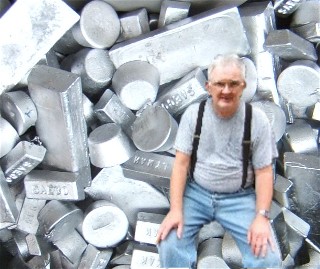I bought a new 225415 a few years back. I was surprised to see that it was quite different from one I bought 45 years ago - quite a bit longer and with a 10% claimed increase in weight but same number.
Finally got around to casting with it this past week. The sprue plate had been punched out and there was a lip around the edge. If the sprue ran over the edge I had to stop and pry it off because it would be stuck tight to the edge. Ground a smooth bevel around the edge and cured that problem.
Then I found that the hardened sprues still wouldn't come out of the conical depressions over the holes even if it was just a neat round puddle over each one because of the rough machining marks. I grabbed up the nearest thing that I thought would work - three different sizes of round headed screws and some 220 grit valve grinding compound and ground away until shiny. That mostly civilized the mold but the solidified puddles still don't come out as gracefully as they should. Will polish more.
Are others finding these problems with current molds or was I just unlucky? What is a better way to smooth the rough conical depressions over the holes?
That mold could better be described as a mold kit instead of a mold since it wouldn't work as received. I should have sent it back.
John




 http://smg.photobucket.com/user/JeffinNZ/media/Shooting%20stuff/22base2.jpg.html>
http://smg.photobucket.com/user/JeffinNZ/media/Shooting%20stuff/22base2.jpg.html>





